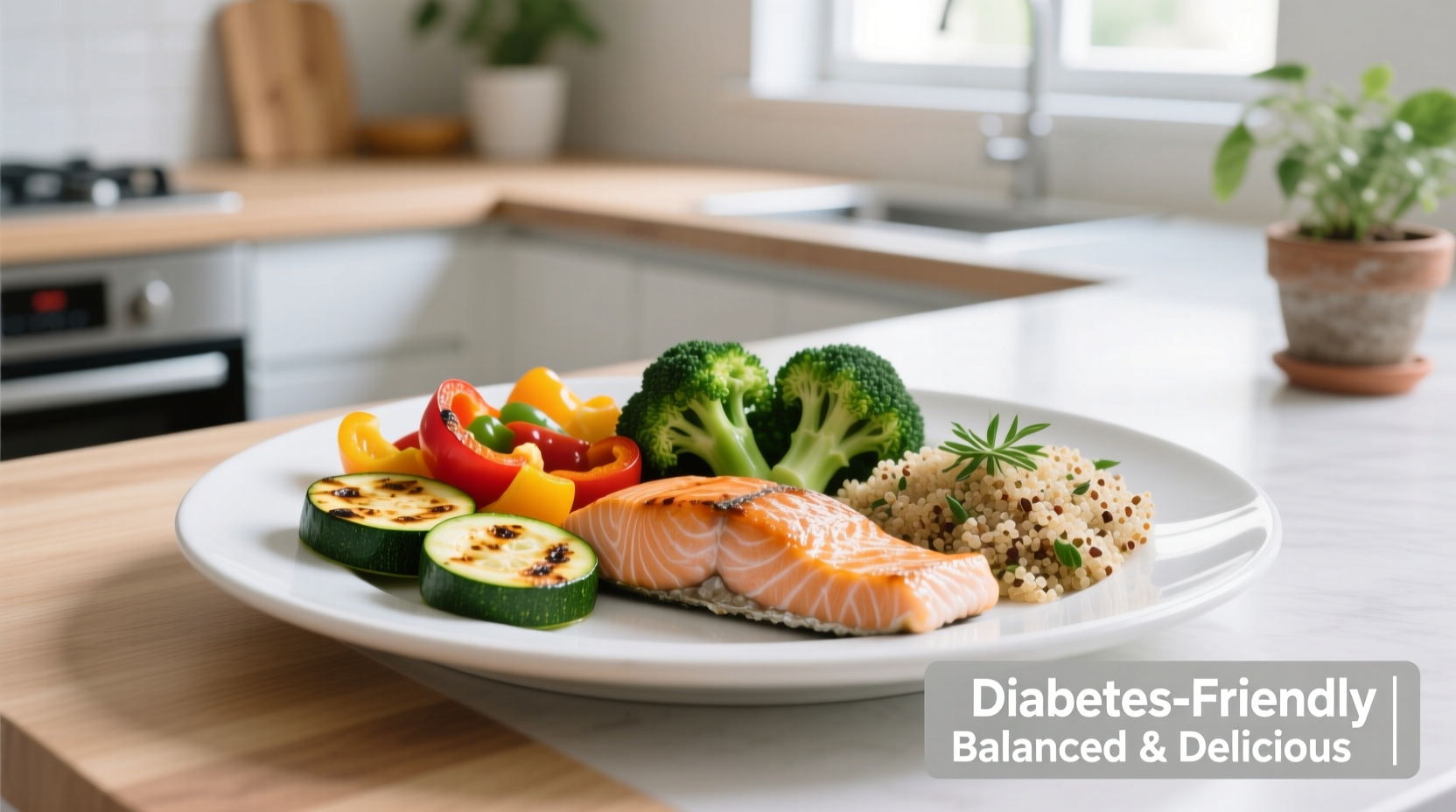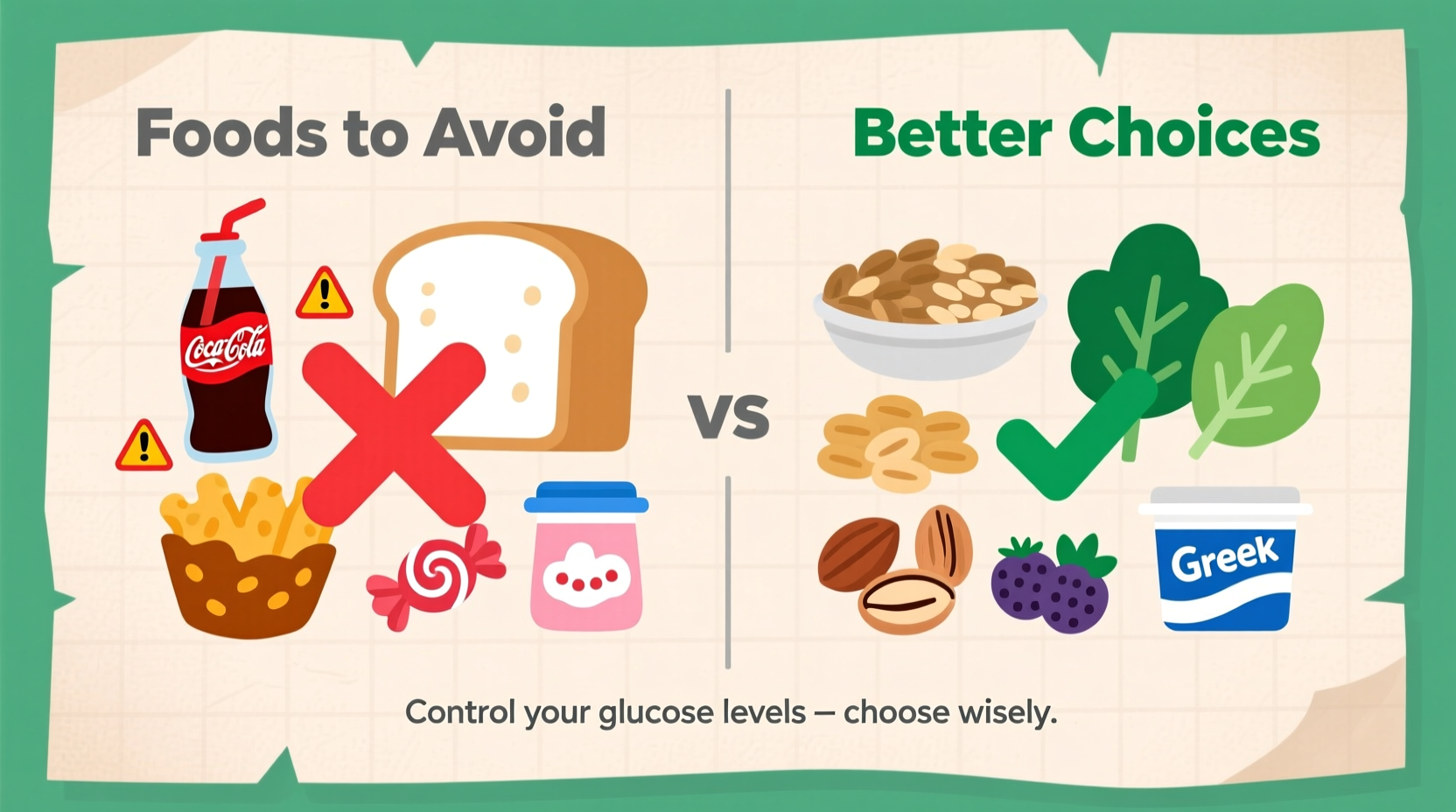Managing diabetes through diet isn't just about restriction—it's about making informed choices that support your body's unique needs. When you understand exactly which foods disrupt blood sugar control and why, you gain powerful tools for daily management. This guide delivers evidence-based recommendations from leading health authorities, helping you navigate grocery aisles and restaurant menus with confidence.
Why Certain Foods Threaten Blood Sugar Control
Diabetes affects how your body processes carbohydrates, which break down into glucose in your bloodstream. Foods that convert quickly to sugar create dangerous spikes that strain your insulin response system. The Centers for Disease Control and Prevention explains that consistent blood sugar spikes increase complications risk over time.
Understanding the glycemic index (GI)—a measure of how quickly foods raise blood sugar—is crucial. High-GI foods (70+) cause rapid glucose surges, while low-GI options (55 or less) provide steady energy release. This scientific framework transforms how you evaluate food choices beyond simple "sugar counting."
| Food Category | Glycemic Index | Impact on Blood Sugar |
|---|---|---|
| White bread | 75 | Rapid spike within 30 minutes |
| Soda (12oz) | 65 | Sharp increase in 15-20 minutes |
| White rice | 73 | Sustained elevation for 2+ hours |
| Broccoli | 15 | Minimal impact, steady energy |
This comparison from the University of Sydney's Glycemic Index Database shows why certain foods require strict limitation. While individual responses vary, these patterns help explain why medical professionals consistently recommend avoiding specific food categories.
Foods to Strictly Limit or Avoid with Diabetes
Sugary Beverages and Drinks
Soda, fruit juices, energy drinks, and sweetened coffees deliver sugar without nutritional benefits. A single 12-ounce soda contains 39 grams of sugar—nearly your entire daily limit. The American Diabetes Association emphasizes that liquid sugars bypass normal satiety signals, causing excessive consumption.
Refined Carbohydrates
White bread, pastries, and most breakfast cereals convert to glucose faster than whole grains. These processed carbs lack fiber that slows sugar absorption. Research published in Diabetes Care shows that replacing refined grains with whole grains reduces HbA1c levels by 0.5% on average.
Fried and High-Fat Foods
Fried foods and fatty cuts of meat contribute to insulin resistance. The National Institute of Diabetes and Digestive and Kidney Diseases explains that high-fat meals slow digestion, causing delayed but prolonged blood sugar elevation that's difficult to manage.
Processed Snack Foods
Crackers, chips, and packaged snacks often contain hidden sugars and unhealthy fats. Food manufacturers frequently add sugar to "savory" products, making label reading essential. A study in the Journal of the Academy of Nutrition and Dietetics found 74% of packaged foods contain added sugars.
High-Sugar Desserts
Cakes, cookies, and ice cream cause immediate blood sugar spikes. While occasional treats might fit some meal plans, daily consumption creates dangerous patterns. The key isn't complete deprivation but strategic substitution with diabetes-friendly alternatives.

Practical Swaps for Common Problem Foods
Successful diabetes management focuses on sustainable substitutions rather than deprivation. Try these evidence-based alternatives:
- Instead of soda: Sparkling water with fresh citrus slices (zero sugar, satisfies carbonation craving)
- Instead of white bread: 100% whole grain or sprouted grain bread (look for 3g+ fiber per slice)
- Instead of fried chicken: Baked chicken with herbs (reduces unhealthy fats by 80%)
- Instead of candy: Berries with cinnamon (natural sweetness with blood sugar benefits)
- Instead of sugary cereal: Oatmeal with nuts and seeds (fiber stabilizes glucose response)
Context Matters: When Some "Forbidden" Foods Might Fit
Diabetes nutrition isn't one-size-fits-all. Certain factors influence whether occasional higher-sugar foods might work in your plan:
- Physical activity level: A post-workout smoothie with fruit might be appropriate when insulin sensitivity is highest
- Medication timing: Some diabetes medications create specific windows for carbohydrate consumption
- Individual response: Continuous glucose monitors reveal personal tolerance levels that differ from general guidelines
The Academy of Nutrition and Dietetics emphasizes that personalized meal planning with a registered dietitian produces better outcomes than rigid food restriction lists. Work with your healthcare team to develop a flexible approach that fits your lifestyle.
Implementing Changes Without Feeling Deprived
Sudden, drastic dietary changes often lead to burnout. Instead, try these practical implementation strategies:
- Start with beverage changes: Eliminate sugary drinks first—they provide empty calories with no nutritional benefit
- Upgrade one meal: Focus on improving breakfast choices before tackling other meals
- Read labels strategically: Check "total sugars" and "added sugars" on nutrition facts panels
- Plan for eating out: Review restaurant menus ahead of time and choose grilled over fried options
- Track your response: Note how different foods affect your energy and glucose levels
Remember that diabetes management is a journey, not perfection. The CDC's diabetes management guidelines stress that consistent, moderate improvements yield better long-term results than short-term extreme restrictions.











 浙公网安备
33010002000092号
浙公网安备
33010002000092号 浙B2-20120091-4
浙B2-20120091-4